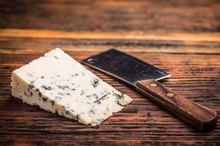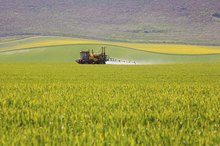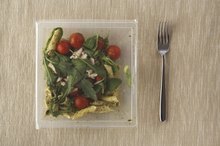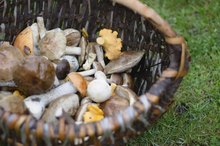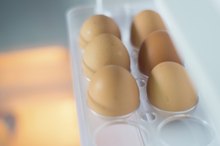What Happens if You Eat Mold Spores?
Chances are you've seen those dark-green colored spots invading old breads, cheeses and meats. As food ages, mold takes over. The results can be unappetizing and unsightly, but is it dangerous if eaten?According to the United States Department of Agriculture, molds are microscopic fungi living on plant or animal matter. There are thought to be as many as 300,000 species of molds, and some can in fact be harmful to your health if ingested.
If you are experiencing serious medical symptoms, seek emergency treatment immediately.
The Anatomy of Mold
When viewed under a microscope, molds look like skinny mushrooms. These multi-celled organisms have a body that consists of root threads, which secure the mold to the food it preys on, a stalk, which rises above the surface of the food, and spores, which form the bulbous end of the spores stalk.
Effects of Eating Mold
How Does Mold Affect Food?
Learn More
It is nearly impossible for the average person to distinguish between harmful and safe molds. Many types of mold are benign have little to no effect, while others can be extremely dangerous with long-term exposure. The most common symptoms of mold ingestion include diarrhea, vomiting and upset stomach.
What to Do if Mold is Eaten
The symptoms of mold ingestion are relatively minor and will go away on their own without any intervention. If you are concerned, taking absorbing activating coal or absorbing salts can help bind the bacterial toxins in mold. If symptoms persist for more than 72 hours, consult a physician as a precaution. However, for peace of mind, realize that eating mold spores may not be the healthiest choice, but it's highly unlikely to cause any serious damage.
- The symptoms of mold ingestion are relatively minor and will go away on their own without any intervention.
- However, for peace of mind, realize that eating mold spores may not be the healthiest choice, but it's highly unlikely to cause any serious damage.
Controlling Mold
Safe Foods to Eat With a Mold Allergy
Learn More
Mold can grow anywhere, but thrives in warm and moist environments. Cleanliness is key to minimizing mold growth. Mold spores can build up in many areas of your kitchen, including the refrigerator, pantry, dishcloths and other cooking utensils. Control mold growth by sanitizing all areas in your kitchen at least every few month. Try to keep the humidity level your home below 40 percent. Examine foods that are commonly associated with mold growth before purchasing and using the products. Only buy enough food that you can consume in a week. Following these simple steps will greatly reduce the chances of finding mold on the foods you eat.
- Mold can grow anywhere, but thrives in warm and moist environments.
- Following these simple steps will greatly reduce the chances of finding mold on the foods you eat.
Related Articles
References
- Amirhosein Ghaffarianhoseini, Husam AlWaer, Hossein Omrany, Ali Ghaffarianhoseini, Chaham Alalouch, Derek Clements-Croome & John Tookey (2018) Sick building syndrome: are we doing enough?. Architectural Science Review,61:3, 99-121.
- American College of Allergy, Asthma & Immunology. Mold Allergy. Reviewed April 23, 2018.
- Centers for Disease Control and Prevention. Fungal Diseases. Reviewed May 6, 2019.
- Centers for Disease Control and Prevention. Mold. Basic Facts. Reviewed December 20, 2017
- Asthma and Allergy Foundation of America. Mold Allergy. Reviewed October 2015.
- Centers for Disease Control and Prevention. Molds in the Environment. Rreviewed December 20, 2017.
- Asthma and Allergy Foundation of America, Mold Allergy
- Centers for Disease Control and Prevention (CDC), Mold, Basic Facts
- Rudert A, Portnoy J.Mold allergy: is it real and what do we do about it?Expert Rev Clin Immunol. 2017 Aug;13(8):823-835. doi: 10.1080/1744666X.2017.1324298. Epub 2017 May 17.
Writer Bio
Brandon Pickard is a business and current events writer from Reno, NV. He is working on his MBA from the University of Nevada, Reno with a emphasis in English. His 15 years of business experience along with his in-depth knowledge of current events brings a unique and entertaining writing style to his work.
